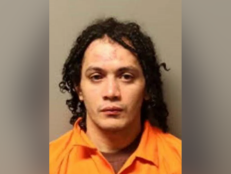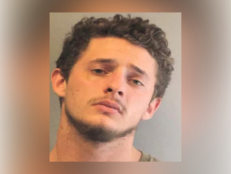5 Essential Things To Know About The Horrific Jodi Arias Case
Jodi Arias was sentenced to life in prison without parole, but does she have a chance for a new trial?
For more on this case, watch Investigation Discovery's If I Can't Have You: The Jodi Arias Story on discovery+ now!
Jodi Arias stands out as one of the most infamous figures of 21st-century true crime culture — so much so, in fact, that it can be easy to forget exactly how the notorious “Boyfriend Killer” came by that terribly accurate nickname, as well as the post-murder controversies that have kept her name in the news.
With that in mind, here’s a look back on the fundamentals of the Jodi Arias case.
1. The Boyfriend, The Killing & “The Boyfriend Killer”
According to court records, on June 4, 2008, Jodi Arias fatally attacked her on-and-off-again lover, Travis Alexander, with a knife and a .25-caliber handgun inside his Mesa, Arizona, apartment.
Authorities said that, prior to the homicidal blow-up, the two-year relationship had been marked by breakups and reunions, with Arias reportedly relocating from the West Coast to Arizona and converting to Alexander's Mormon faith in order to be close to him.
On their last day together, Arias, 24, allegedly stabbed the 30-year-old Alexander 29 times, slit his throat, and then fired a bullet into the back of his head. A coroner later stated that Alexander may have already been dead by the time he was shot.
Five days later, friends came to Alexander’s apartment after he failed to show up for a work call and a scheduled vacation. Inside, the friends reportedly discovered Alexander’s brutalized body and immediately called the police.
Responders searching Alexander’s residence said they discovered a digital camera that was later presented as evidence. The camera reportedly contained numerous sexually explicit images of Alexander and Arias, along with a picture of Alexander taking a shower and one final shot of him “profusely bleeding” on the floor of the shower.
Investigators also said they found a bloody palm print at the crime scene that contained DNA from both Anthony and Arias. Detectives quickly turned their attention to Jodi Arias as a potential suspect.
2. As The Evidence Mounted, Jodi’s Story Kept Changing
Ryan Burns, a coworker of Arias, reportedly told police that on the day after the murder, he met her for a business conference in Salt Lake City, Utah. Burns said that Arias had very recently dyed her blonde hair dark brown, and he said he noticed cuts on her hands.
Arias then allegedly returned a rental car on June 7. The clerk at the rental company testified that the car had been driven about 2,800 miles in two days, as well as that its floor mats were missing, and that he noticed red stains in the vehicle.
Alexander’s friends reportedly then told police that the dead man had previously accused Arias of stalking him, claiming that she had illegally accessed his social-media accounts and even, it was later alleged in court, sneaked into his house through a doggie door.
On July 9, police indicted Jodi Arias for the first-degree murder of Travis Alexander. She pleaded not guilty on September 11.
At first, Arias claimed that masked home invaders had murdered Alexander, and explained that she didn’t go to the cops because she feared they'd come back and kill her if she said anything.
After that notion fell apart, Arias reportedly told detectives that she killed Alexander in self-defense, striking back after he had allegedly repeatedly committed domestic violence against her.
Prosecutors countered that Arias had exploded in jealousy over Alexander saying he wanted to break things off with her for good and take a trip to Mexico with a different woman.
Regardless, on November 8, Arias told Inside Edition, “No jury is going to convict me, because I am innocent. You can mark my words on that.”
3. Raunchy Revelations Heat Up A Tempestuous Trial
After four years of various psychological tests and legal proceedings, opening arguments in the trial of Jodi Arias commenced on January 2, 2013. Prosecutor Juan Martinez said the state would seek the death penalty. Arias’ legal team said it would argue justifiable homicide by reason of self-defense.
Ryan Burns testified that, on the day after the murder, Arias made out with him for several hours on a beanbag chair and told him that she had cut her hands while working in a restaurant called Margaritaville.
Prosecutor Martinez told the jury that no such restaurant existed anywhere near where Arias worked and that, in addition, she had slashed Alexander’s tires and staged a burglary in which she claimed her .25-caliber pistol was stolen to cover up using that gun to kill him. Martinez also said that Arias had run Alexander’s camera through the washing machine in an attempt to destroy it.
On February 4, Arias took the stand and testified for an “unprecedented” 18 days straight. She explained that she and Alexander regularly engaged in oral and anal sex because, she claimed, he believed these forms of intercourse didn’t violate Mormon regulations.
Attorneys then played a tape of Arias and Alexander having phone sex in which they talked about him having anal sex with her while she was zip-tied and dressed as Little Red Riding Hood. Arias allegedly taped the call without Alexander’s knowledge or permission.
In addition, Arias testified that Alexander was sexually attracted to both male and female children, but no other evidence emerged to back up that claim.
Arias made detailed claims about the violence she said Alexander regularly committed against her. She told the court that on June 4, she dropped Alexander’s digital camera and he got so angry she feared for her life, which prompted her to fight back with a knife. Afterward, she said, she had no recollection of actually attacking Alexander.
This account of what happened on that date marked the third time Arias had changed her story. Many observers, including some jurors, later said this factor severely damaged her credibility. So too, reportedly, did testimony from rebuttal witnesses who stated that Alexander had never exhibited any violent tendencies.
After that, numerous psychologists testified on behalf of the defense, alleging that Arias suffered numerous mental and emotional afflictions, including post-traumatic stress disorder (PTSD).
4. After The Verdict, An Ongoing Series Of Still More Sensational Trials Led To A Life Sentence
On May 8, 2013, the jury convicted Arias of first-degree murder. Five jurors found her guilty of premeditated murder, and seven found her guilty of both premeditated and felony murder.
The jury deadlocked, however, on whether Arias deserved to be executed for her crimes. This led the judge to declare a mistrial on the penalty phase and order a new trial regarding capital punishment.
After a second jury could not reach a verdict regarding the death penalty, Judge Sherry Stevens was empowered to make the call. Pondering the possibilities, Arias reportedly proclaimed, “The worst outcome for me would be natural life… Longevity runs in my family, and I don’t want to spend the rest of my natural life in one place… I said years ago I’d rather get death than life and that still is true today. I believe death is the ultimate freedom, so I’d rather just have my freedom as soon as I can get it.”
On April 7, 2015, Judge Stevens sentenced Arias to life behind bars without the possibility of parole.
Seven years after the murder of Travis Alexander, Arias then began serving her time at the Arizona State Prison Complex-Perryville.
5. The Jodi Arias Case Was One Of The First Mega-Trials Of The Social Media Age & It Continues To Spark Controversy Both Online & Off
Each day of the Jodi Arias trial, thousands of internet users watched every moment of the courtroom proceedings online. Cable news networks turned Arias into one of the most bombastic topics for its various talking heads to shout at one another about. A TV movie, Jodi Arias: Dirty Little Secret, aired in 2013 to ratings success.
All this hoopla prompted numerous observers to decry the media for turning murder into entertainment in ways that had never before been possible, thanks to changing technology.
Arias even seemed to take advantage of social media herself, reportedly selling her artwork online through her brother’s eBay account as early as 2013 and, more recently, receiving death threats and tweeting from jail.
More than a decade after Travis Alexander tragically bled out in his shower, Arias continues to be a dominant figure in online discourse regarding crime. The public apparently remains fascinated, whether it’s over a claim made by her former cellmate that Arias said she had help with the murder, or how Arias won a Christmas dinner by singing “O Holy Night” in a prison talent contest, or the fact that one of her defense attorneys has said Arias is “the reason why cancer infested my body.”

![Keegan Kelley Harroz [left] and Barry Roland Titus II [right] were charged with triple murder in the deaths of Titus's ex-girlfriend and her parents.](http://investigationdiscovery.sndimg.com/content/dam/images/investigationdiscovery/crimefeed/legacy/2024/okmulgee-county-detention-center-keegan-harroz-barry-titus-20924.png.rend.hgtvcom.231.174.suffix/1707516057614.png)







![Courtney Clenney, 26, [left] and Christian Obumseli, 27, [right] pictured smiling.](http://investigationdiscovery.sndimg.com/content/dam/images/investigationdiscovery/crimefeed/legacy/2022/08/instagram-courtney-clenney-christian-obumseli-08172022.png.rend.hgtvcom.231.174.suffix/1660756178840.png)